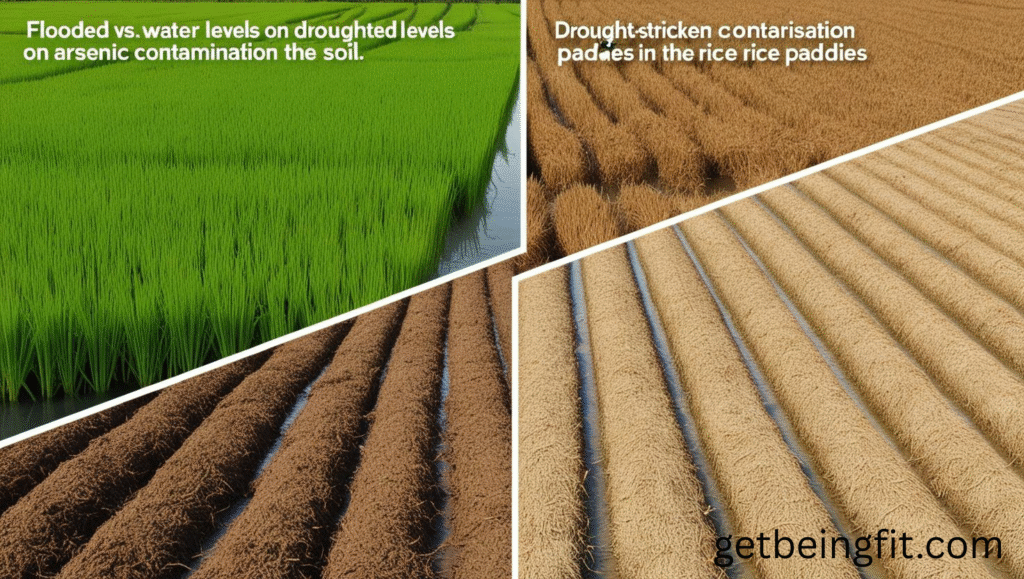Climate change is silently driving arsenic levels in rice—a global staple for billions. Uncover the riskiest rice types, top detox cooking methods, and actionable tips to safeguard your family’s health.
Introduction: The Silent Poison on Your Plate
Imagine sitting down to enjoy a meal of rice, unaware that it carries a hidden danger: arsenic contamination. Research shows how climate change accelerates arsenic absorption in rice, turning a beloved food into a stealthy health hazard. For billions worldwide, this issue deserves immediate action.
Contents
Climate change is silently driving arsenic levels in rice—a global staple for billions. Uncover the riskiest rice types, top detox cooking methods, and actionable tips to safeguard your family’s health.Introduction: The Silent Poison on Your PlatePart 1: The Climate-Arsenic Link—Insights from 2023 ResearchHow Climate Change Fuels Arsenic ContaminationPart 2: High-Risk Rice—What to AvoidGlobal Arsenic RankingsRed Flags:Safe Alternatives:Part 3: Detox Your Rice—5 Science-Backed HacksPart 4: Vulnerable PopulationsConclusion: From Fear to ActionFAQs: Key Questions Answered
In this guide, we’ll explore:

- Why climate change makes rice riskier (backed by 2023 studies)
- The 4 riskiest rice types to avoid
- 5 science-backed cooking hacks to slash arsenic by up to 80%
- Advocacy tips for safer farming practices
Part 1: The Climate-Arsenic Link—Insights from 2023 Research
How Climate Change Fuels Arsenic Contamination
- Flooding Frenzy: Flooded paddies release soil arsenic into water, mimicking silicon—a nutrient rice mistakenly absorbs.
- Drought Domino Effect: Drought cycles concentrate arsenic in soil, making subsequent floods a toxic trap.
- CO2’s Hidden Impact: High CO2 weakens rice’s filters, allowing more arsenic into grains.
Research Highlights:
- 2023 findings in Science of the Total Environment show arsenic absorption rises 3.2x in flooded, high-temperature paddies.
- The WHO and FDA reveal unsettling trends in global arsenic levels.
Part 2: High-Risk Rice—What to Avoid
Global Arsenic Rankings
| Rice Type | Arsenic Level (ppb) | Safe Weekly Limit |
|---|---|---|
| Brown Rice | 154 | 1.5 cups (adults) |
| Rice Cakes | 287 | Avoid |
| Basmati Rice (White) | 45 | 4 cups |
| Baby Rice Cereal | 328 | Zero (for infants) |
Red Flags:
- South Asian & US Rice: Higher contamination linked to pesticide legacy.
- Organic Labels: Arsenic stems from soil, not farming methods.
Safe Alternatives:
- California White Rice: Tested lower in arsenic.
- Himalayan Red Rice: Grown in clean mountain regions.

Part 3: Detox Your Rice—5 Science-Backed Hacks
- Pasta Method: Boil rice in excess water and drain (reduces arsenic by ~60%).
- Lemon Juice: Add 1 tbsp while cooking—vitamin C binds arsenic.
- Soak & Rinse: Overnight soaking and thorough rinsing minimize toxins.
- Choose parboiled rice: it removes ~30% more arsenic during processing.
- Switch Grains: Opt for millet, quinoa, or cauliflower rice.
Part 4: Vulnerable Populations
- Children: Risks include brain damage. Opt for oatmeal or barley.
- Pregnant Women: Linked to low birth weight. Stick to basmati.
- Gluten-Free Dieters: Swap rice-heavy diets for buckwheat or amaranth.
Conclusion: From Fear to Action
Act now to protect your family and future generations:
- Use $20 home testing kits for rice.
- Petition brands to disclose arsenic levels.
- Support policies funding cleaner farming practices.
FAQs: Key Questions Answered
- Is sushi rice safe?
- Yes, when rinsed and cooked with the pasta method.
- Does brown rice’s nutrition outweigh its arsenic risk?
- For adults, limit to 1-2 servings/week; kids should avoid it.
- Q6: Does rinsing rice remove all arsenic?
- A: Rinsing reduces arsenic, but not entirely. Combining rinsing with the pasta method is the most effective strategy.
- Q7: Why is arsenic in rice such a big problem compared to other grains?
- A: Rice absorbs arsenic more easily due to its cultivation in flooded fields where soil arsenic is mobilized into water.
- Q8: What’s the difference between organic rice and conventional rice regarding arsenic levels?
- A: Organic rice does not inherently contain less arsenic; the contamination comes from soil, not farming methods.
- Q9: Are there rice varieties specifically bred to resist arsenic absorption?
- A: Research is ongoing to develop arsenic-resistant strains of rice. These are not yet widely available on the market.
- Q10: Can switching to quinoa or other grains completely eliminate arsenic risks?
- A: Quinoa and other grains like millet have significantly lower arsenic levels, but a varied diet is always the healthiest approach.
- Q11: How can I know if the rice I’m buying has safe arsenic levels?
- A: Check for brands that disclose arsenic testing results or look for certifications. Home testing kits are also an option.
- Q12: Is arsenic in rice linked to specific health conditions?
- A: Yes, long-term exposure to arsenic has been associated with cancer, heart disease, and developmental issues in children.
- Q13: Are arsenic levels in rice regulated globally?
- A: The EU has stricter limits for arsenic, especially in baby food. The US has recommendations but no enforceable standards.
Global health authority backing your cancer risk claims.


